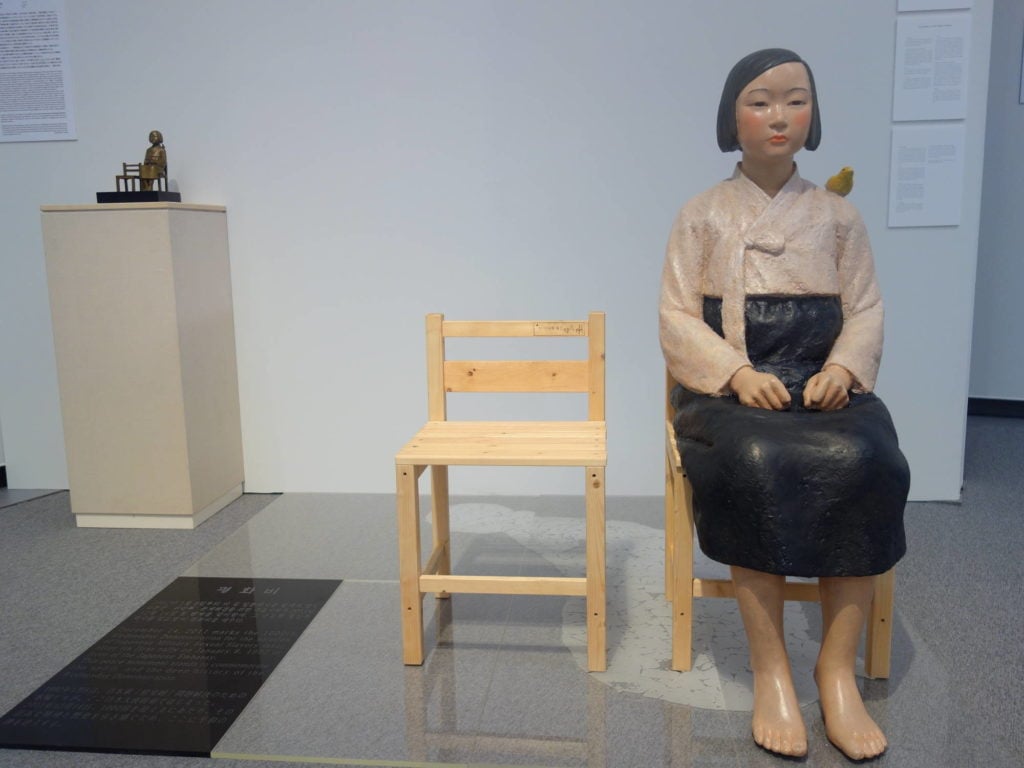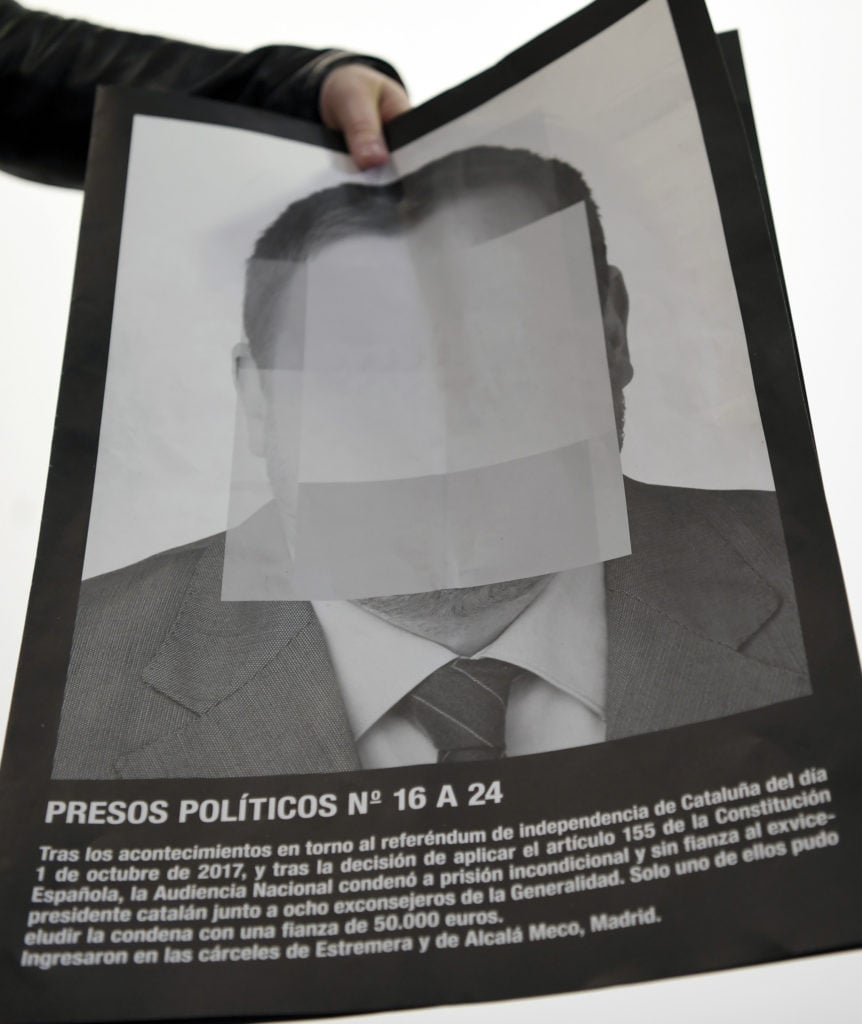Politics
A Sculpture That Was Censored From Japan’s Aichi Triennale Will Become a Centerpiece of a New Museum for Banned Art
The Spanish collector Taxto Benet plans to install the work in his forthcoming Freedom Museum.

The Spanish collector Taxto Benet plans to install the work in his forthcoming Freedom Museum.

Javier Pes

A Spanish collector who is creating a permanent home for art that has been censored just made his latest high-profile acquisition. Tatxo Benet bought the sculpture censored from Japan’s Aichi Triennale earlier this month. Ironically, the piece was removed from an exhibition about censored art.
The sculpture, which has caused controversy in the past, is now destined for Benet’s planned “freedom museum” in Barcelona, a hub for contemporary art that has been banned or suppressed in countries around the world.
Benet moved quickly to snap up an edition of Statue of a Girl of Peace (2011) by the South Korean artists Kim Seo-kyung and Kim Eun-sung for his fast-growing collection. The sculpture depicts a “comfort woman”—one of many thousands of women sold into sexual slavery by the Japanese military during World War II.
Immediately after the exhibition, titled “After ‘Freedom of Expression’?”, opened as part of the Aichi Triennale, the work drew hundreds of complaints; one person even threatened to burn down the museum. As a result, organizers decided to close the section of the triennial just three days later.
The backlash was swift: 85 of the nearly 100 participating artists issued a statement requesting that the show be reopened under proper security measures. Ten artists, including Pedro Reyes and Tania Bruguera, also demanded that their own works be removed from the triennial in solidarity with the censored sculptors.
Benet told the news agency EFE that as soon as he heard about the controversy, he contacted the artists to buy their work. The triennial’s ban “is a double contradiction because not only an artistic work is censored, but an exhibition against censorship is closed,” he said.
The collector told Reuters that he now has enough material for a permanent exhibition “and perhaps even a documentation and archive center about censorship in the art world.” The former journalist and millionaire businessman, who co-founded the Barcelona-based communications group Mediapro, is planning to open his museum in the Catalan capital in the not-too-distant future, although no opening date has been made public.

Santiago Sierra’s Political Prisoners in Contemporary Spain, which includes jailed Catalan separatists, was removed from the leading art fair Arco Madrid. Photo by Gabriel Bouys, AFP/Getty Images.
Benet first came to international prominence in the art world when he bought a work by the Spanish artist Santiago Sierra that was censored at the ARCO fair in Madrid in 2018. The artist’s installation featured partially obscured portraits of jailed Catalan separatists and other political prisoners in Spain.
Benet told EFE that he has began collecting censored work less than two years ago. He now owns more than 60 pieces, including a video by the late American artist David Wojnarowicz that was pulled by the National Portrait Gallery in Washington, DC, in 2010. The Smithsonian’s decision to self-censor A Fire in My Belly from the exhibition “Hide/Seek” after complaints by members of Congress as well as members of the Catholic League was was widely condemned in the art world.
Benet’s international collection includes work banned in France, Turkey, China, England, Argentina, the US, and from Arab countries. “All have been censored, although the motives vary: political, religious, sexual, social, moral,” he explained. He added that when he contacts artists, they often lower the price of their work when they learn it is destined for a museum championing censored art.